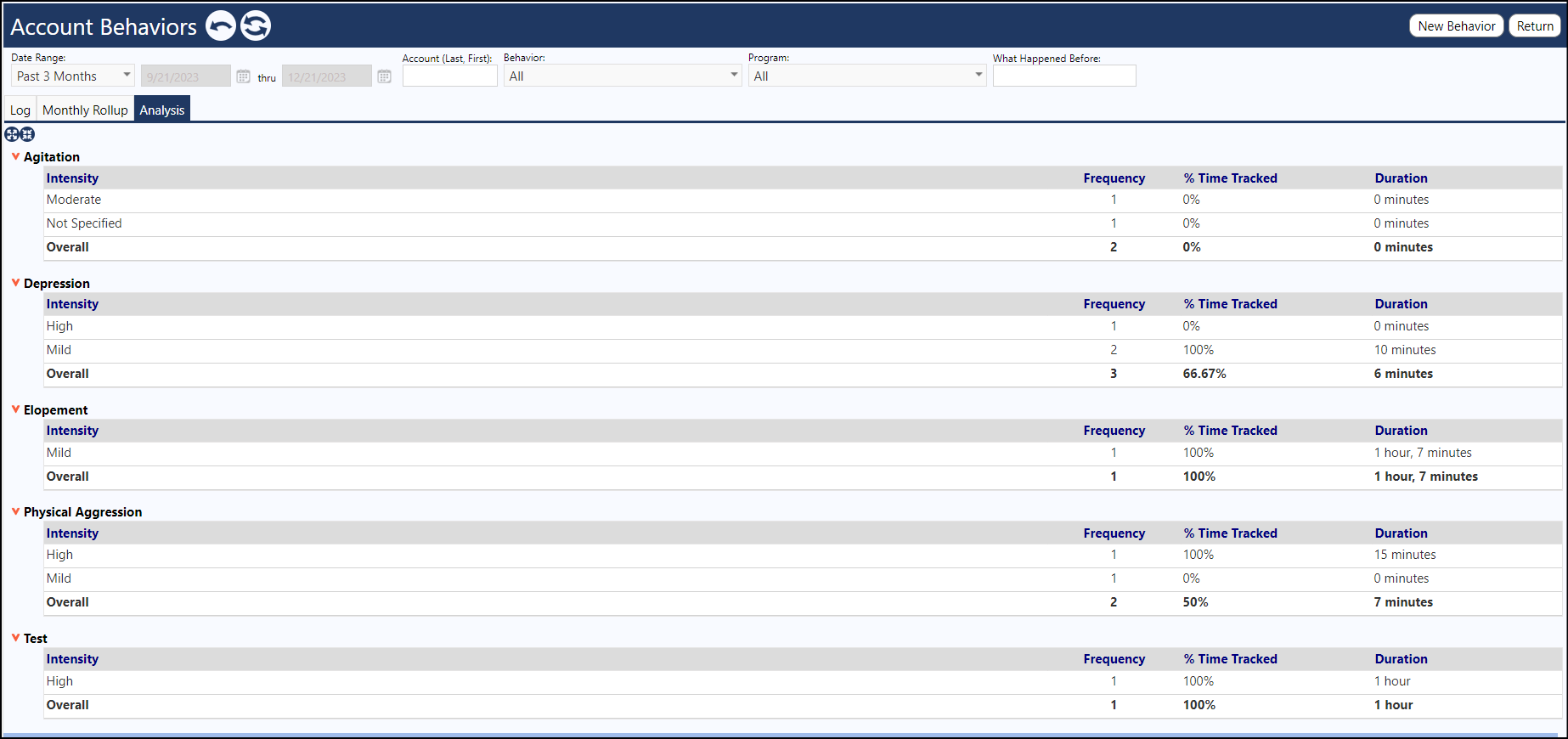People with disabilities get a “BSP” (Behavior Support Plan”) that outlines expected behaviors and mitigation strategies. For some agencies, it’s a free-text, non-structured document; for others it is structured similar to a structured Treatment plan.
When as a person acts up at the residence home, the staff can call up the plan to see guidance, after the plan has been setup in IMPOWR. The staff can also log the behavior as sort of a Lightweight incident report – that’s done from the Staff Action - Work Queue screen. If a more formal incident report is needed, the plan does have a link to Incidents, where an incident report can be logged.
The following is required to setup and use Behavior Support Plans in IMPOWR:
Configuration:
- The first thing which is needed is a master list of behavioral events. The following is how that list is created:
Build a Behavior List in the Configuration-Reference libraries:
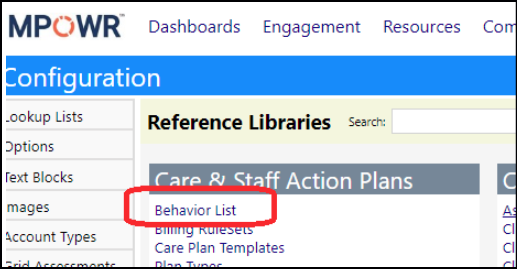
Click on Add Behavior...
Add a description and a "behavior Code" (like an ICD code). YOu can also indicate whether you require the Intesity and/or the Duration to be captured. A more detailed description of the behavior can also be added:
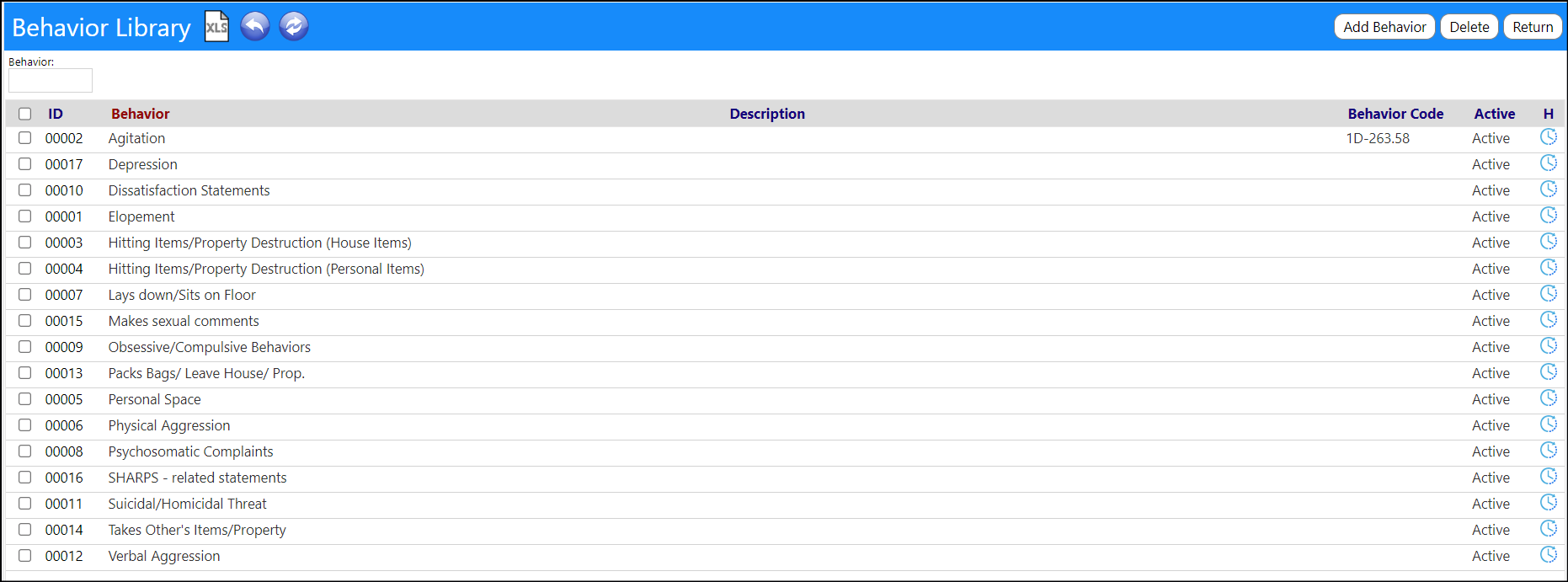
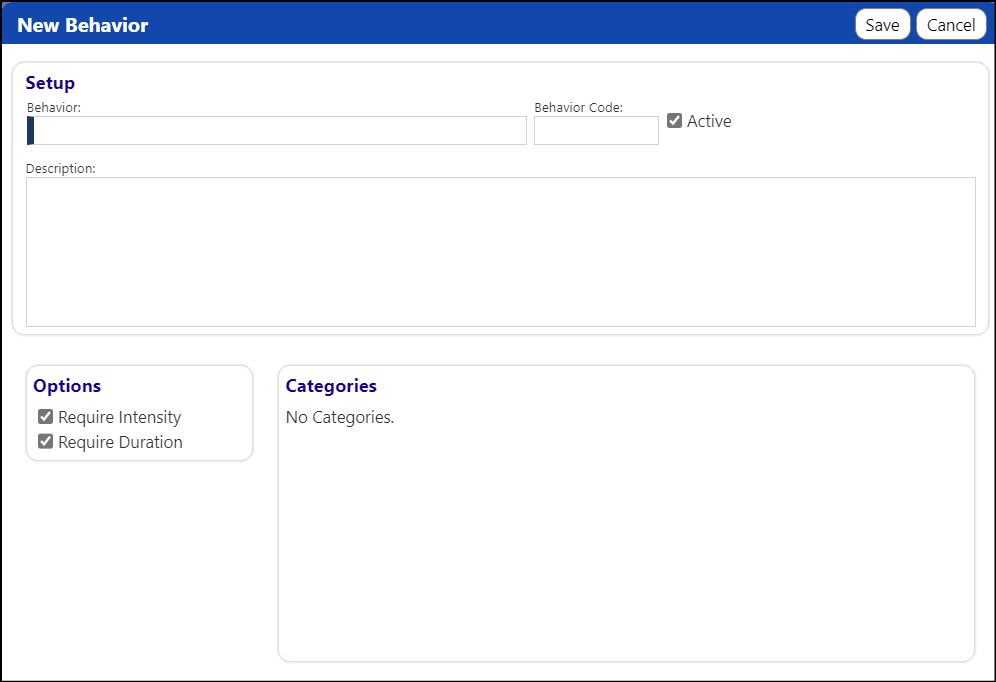
To make a change to a behavior or correct spelling, click on the Behavior's ID and you can edit your behavior.
- Link the master list of behavior codes to specific behavior plans. (Example: link the behavior codes to a Behavior Support Plan Client Document type called "BSP".)
Access the Client Document Types in the Configuration Reference Libraries:

Click on the document Type's ID that you wish to link the Behavior list to.
Activate 'behavior linking' for that Client Document Type by checking the appropriate checkbox:
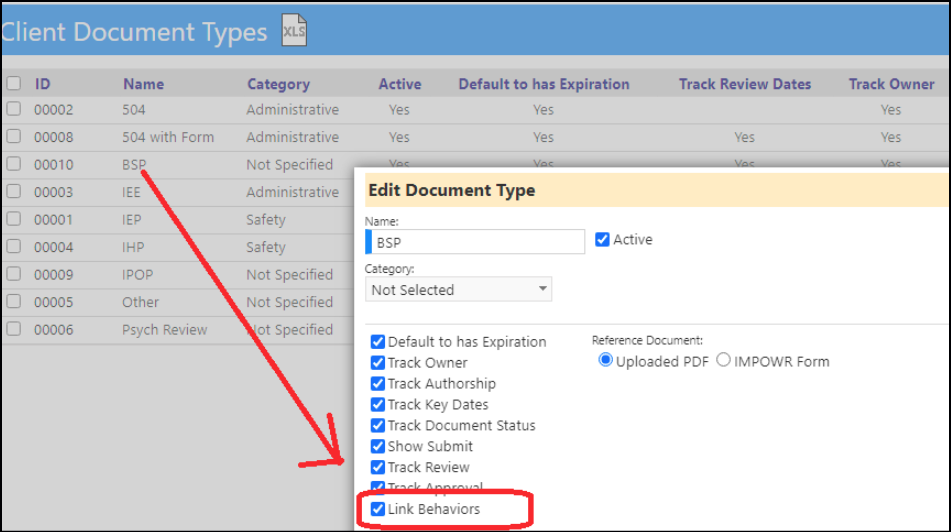
Adding Behaviors to the 'BSP' Client Document
Once behavior linking is enabled in the 'BSP' Client Document, the ability to add Behaviors appears on the corresponding client document (the link is based on the Client Documents with behavior tracking turned on):
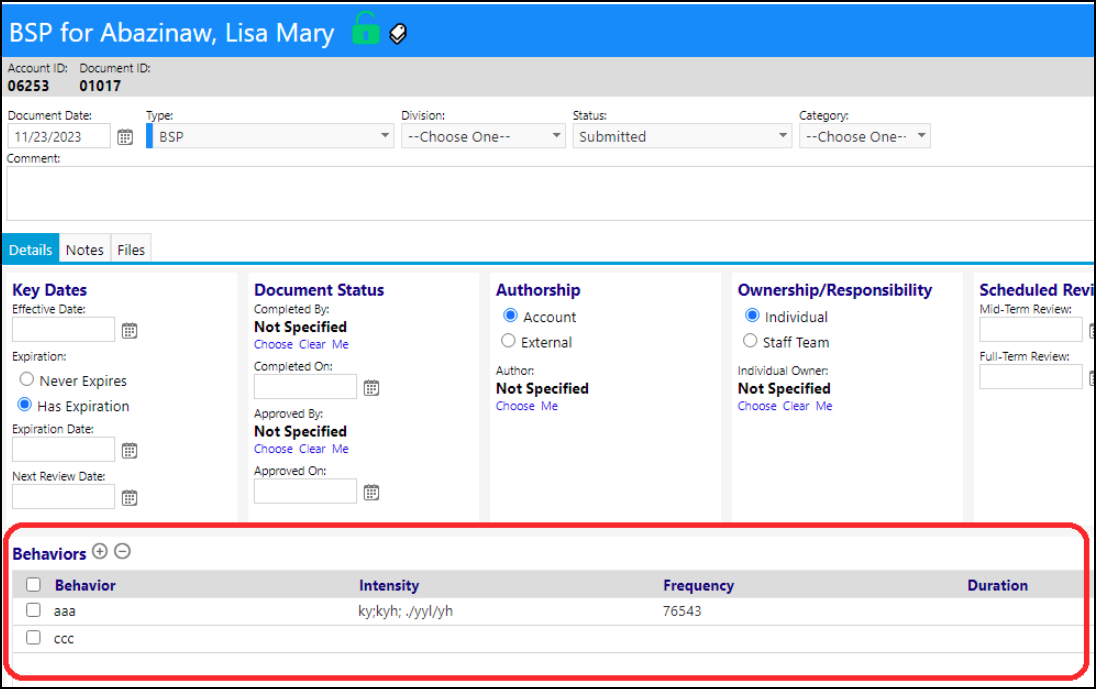
Creating a BSP
The creation of the BSP is done in the Client Documents.
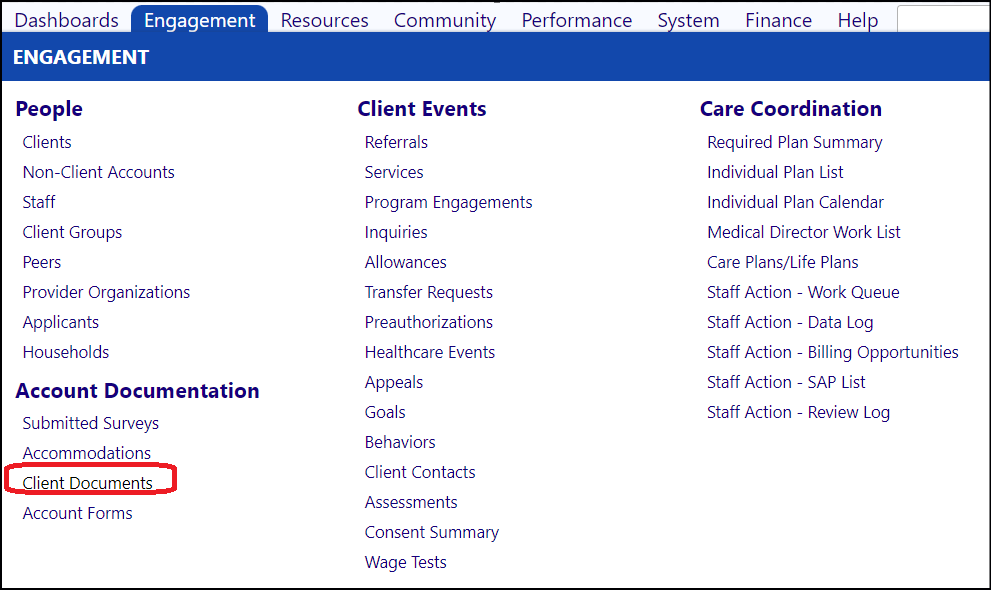
Select the BSP Client Document Type:
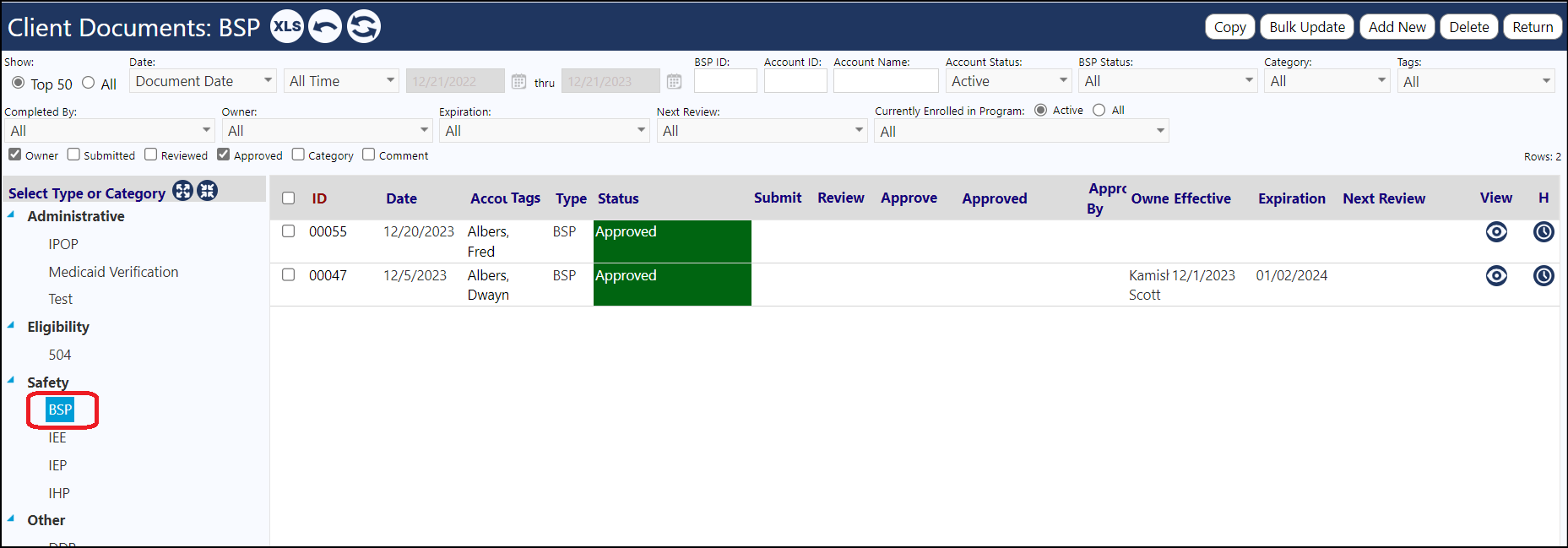
Click Add New to create a new document.
Select the Client from the drop-down list.
The BSP form will open for your client.
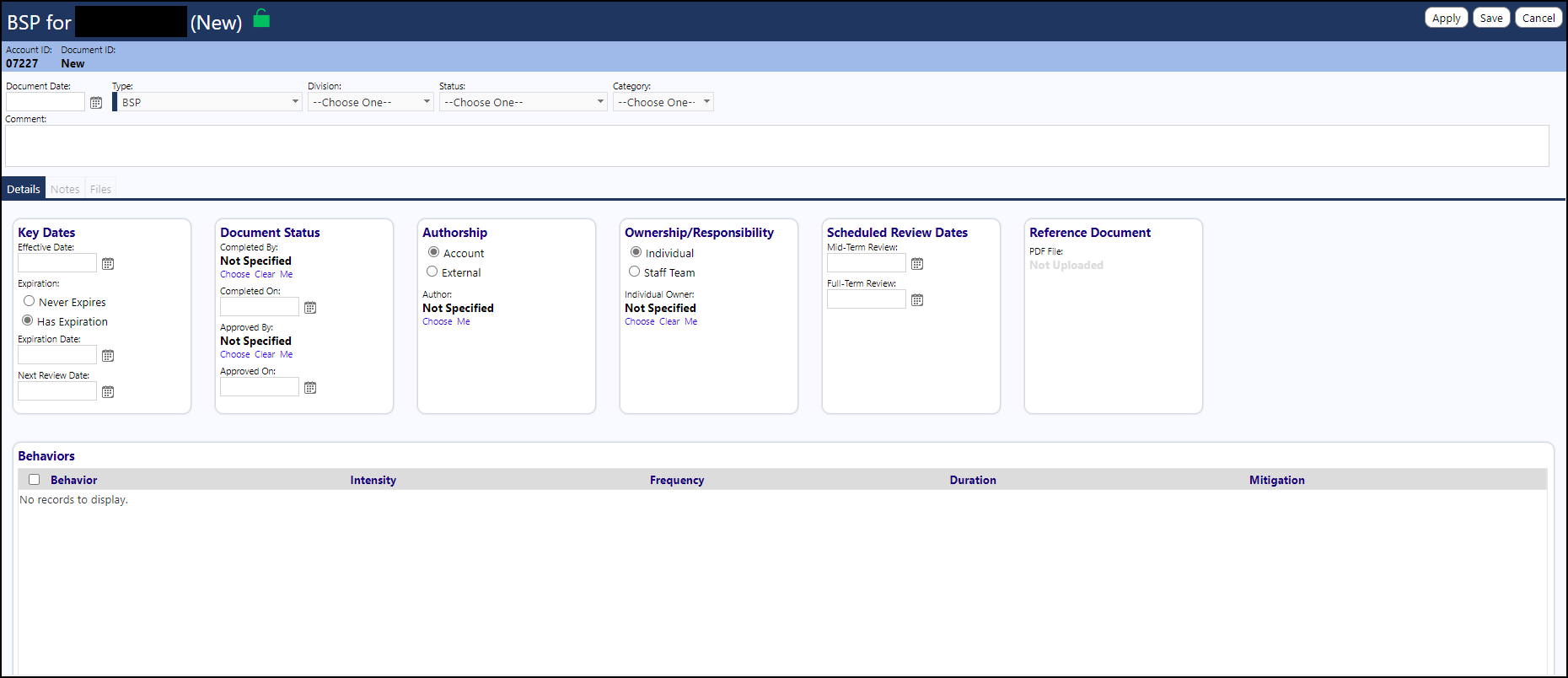
- Add the Document date
- Make sure the Type is "BSP". If not, select BSP from the drop-down list.
- Optionally enter a Division, the Status, and the Category, as well as any desired comments.
Click Apply in the upper right corner of the screen to initally save the BSP and apply your entries.

Once you click Apply, the bottom half of the screen will be activated.
Optionally enter in the dates, and other fields in the lower portion of the page, in the Details section:
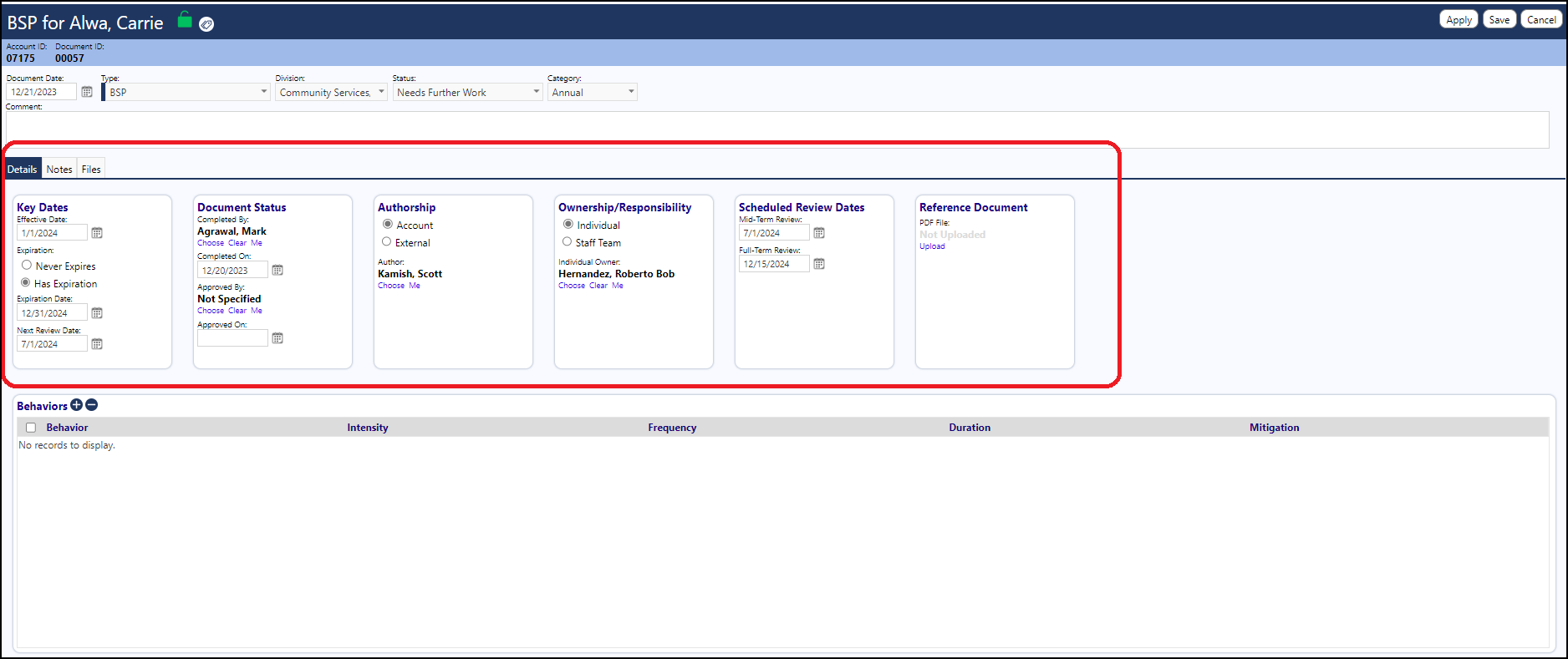
Attaching a Behavior Plan PDF
You can upload a PDF document to this BSP, by clicking on "Upload" in the Reference Document panel:

You can drag and drop the file into the upload tool - the system will let you know if it will upload successfully, by displaying a green light:

After you click Upload, the file will be attached to your BSP. It can be viewed by clicking on "Uploaded (View)". Delete it by clicking on the Delete link.
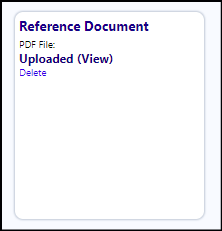
Other than the entry of Behaviors, the BSP is now complete.
You can save your entries by clicking on the Save button on the upper right corner of the screen.

Adding Behaviors to the BSP
Any time either during the creation of the BSP, or after it is created and saved, you can add behaviors to your BSP.
If the BSP was already created, access the BSP via the Client Documents and click on the BSP ID for your desired BSP (on the left side of the screen).
This will open the BSP in Edit Mode:
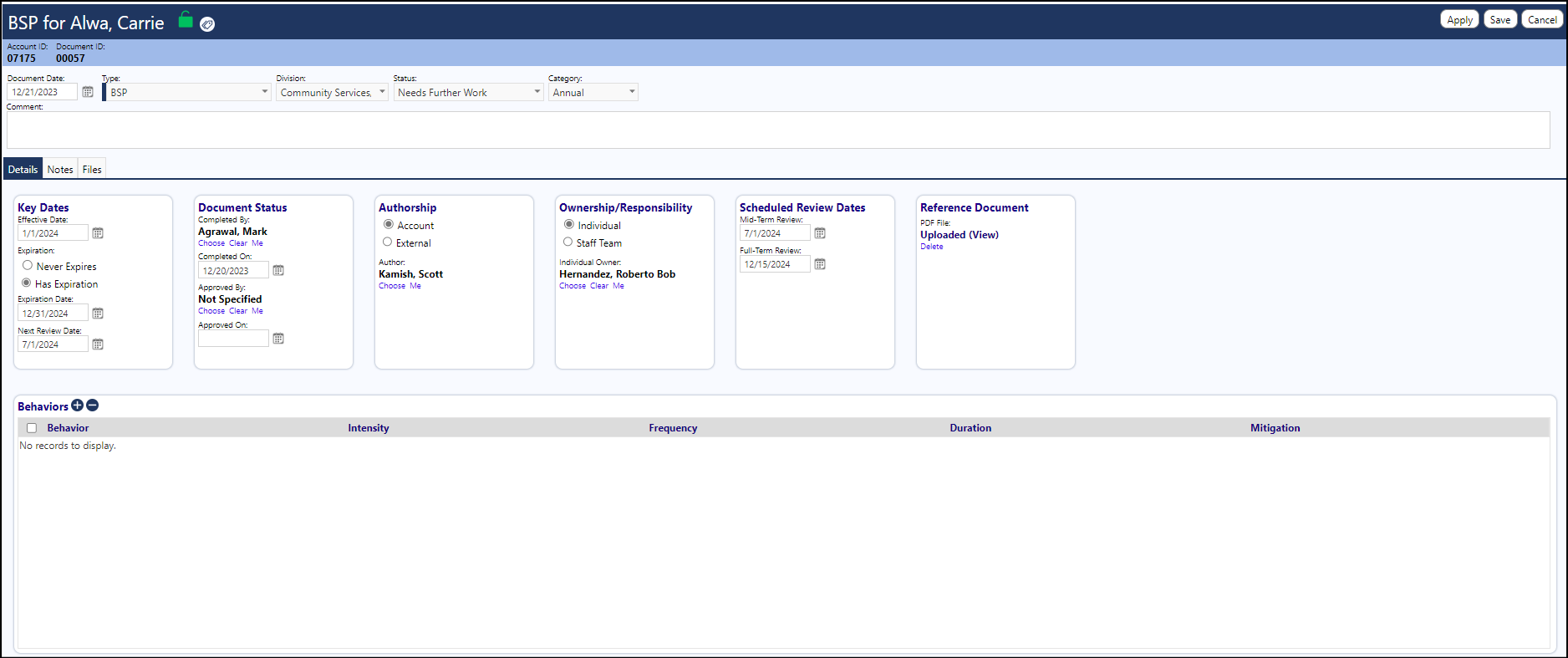
To add a Behavior to your BSP, click on the '+' sign next to the word "Behaviors": (Conversely, to remove a Behavior that was added, select it and click on the "-".)
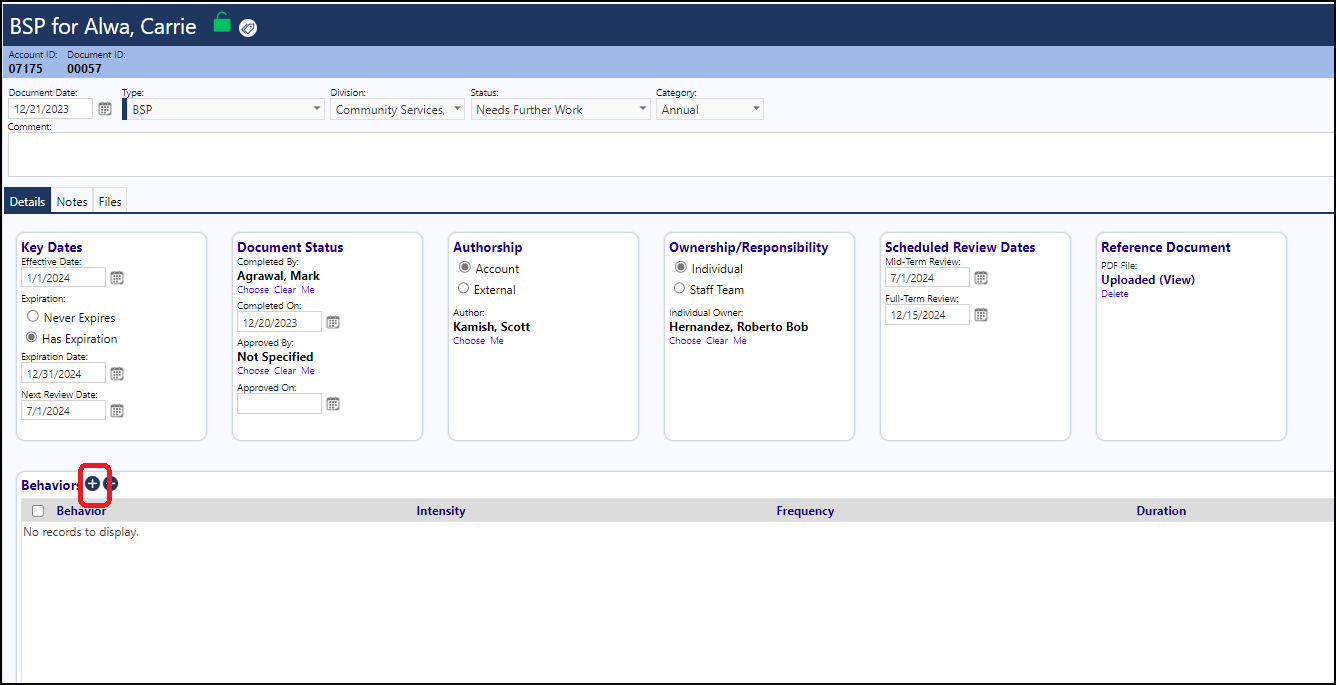
Select one or more behaviors from the Choose Behavior(s) list and click Save:
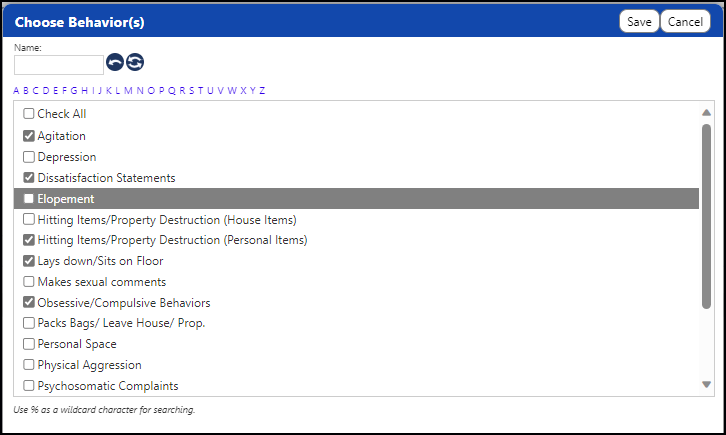
The Behaviors will display in the BSP.

Click on any of the Behaviors to open up the details page, so you can capture the intensities exhibited by the individual for the selected behavior by clicking on the "+" and choosing one or more behaviors:
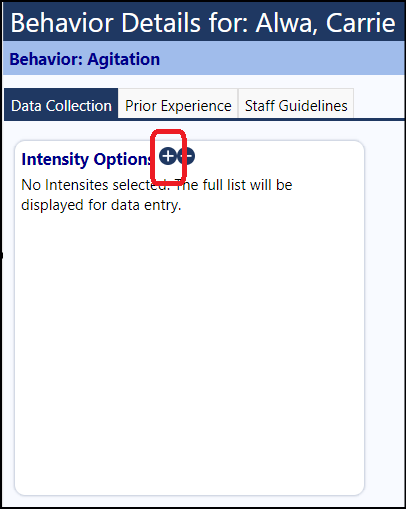
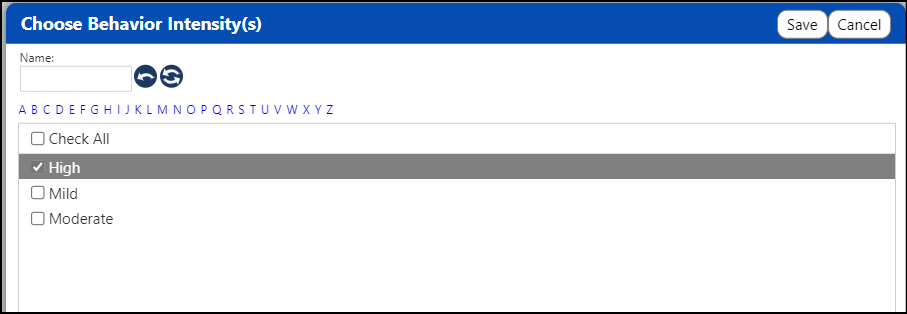
Behavior Intensities are user configurable in the Lookup Lists:
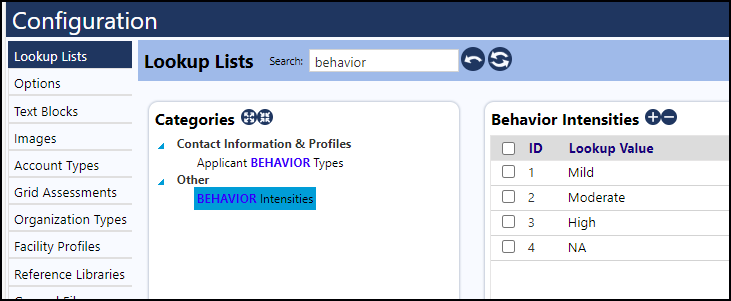
Click on Prior Experience to enter and capture how the individual experienced the behavior in the past to give the staff an idea of what to expect and what worked in the past to address the behavior:
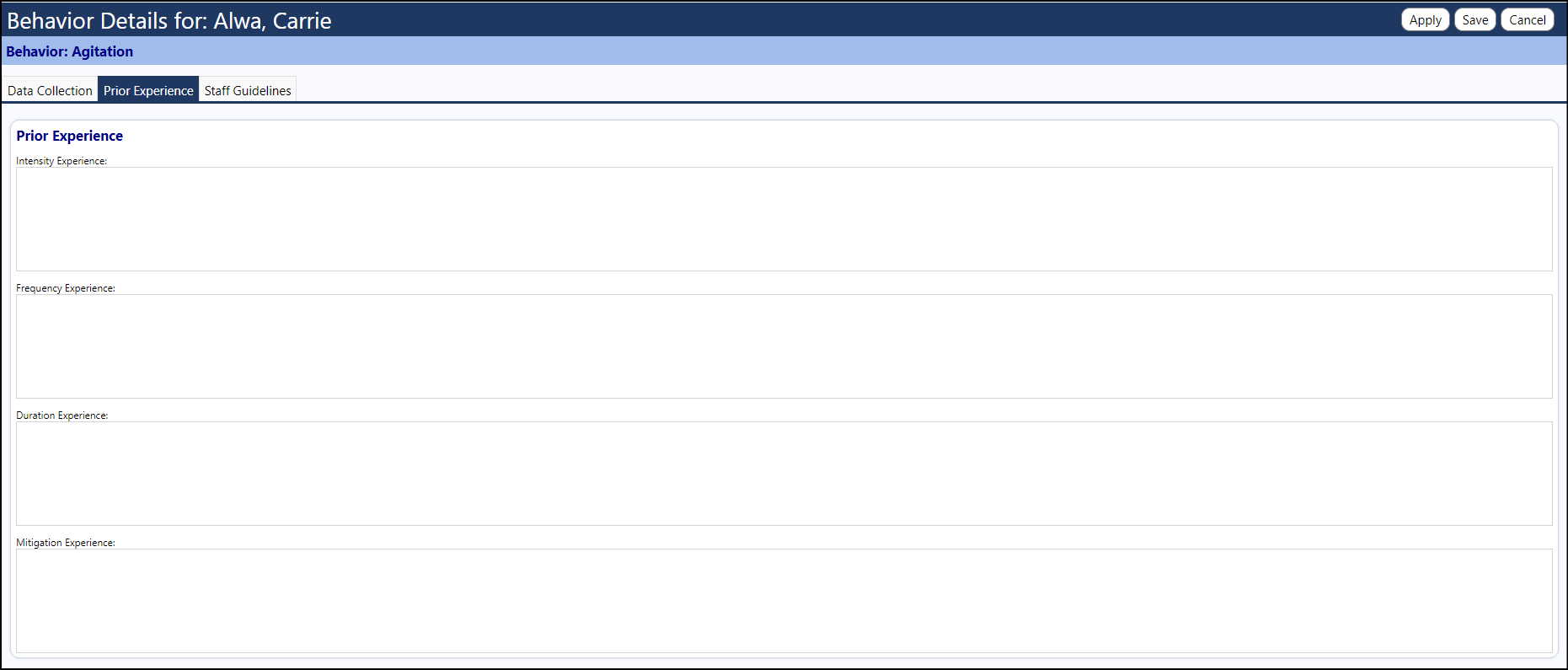
And click on Staff Guidelines to provide recommendations of how to properly handle the situation.
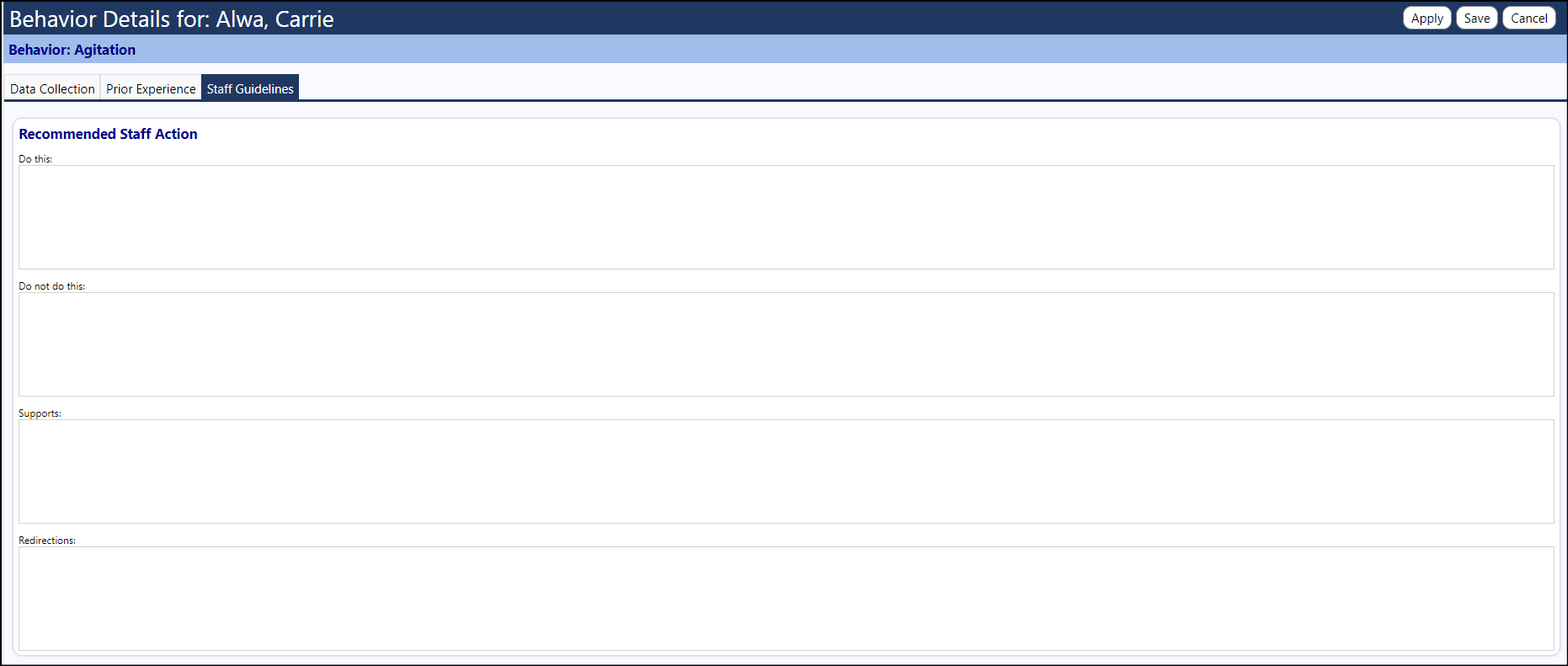
When you are done, be sure to click Save to save all of the entries you made.
As you enter your information, you can also click on Apply. Apply saves your entries, but unlike Save, which saves your entries and then closes the screen, Apply saves your entries and keeps you on the same open screen.
Accessing Behaviors
Users can access the 'BSP' form via links in the following two places:
-
They can view the BSP on the Staff Action Work Queue "Perform" screen
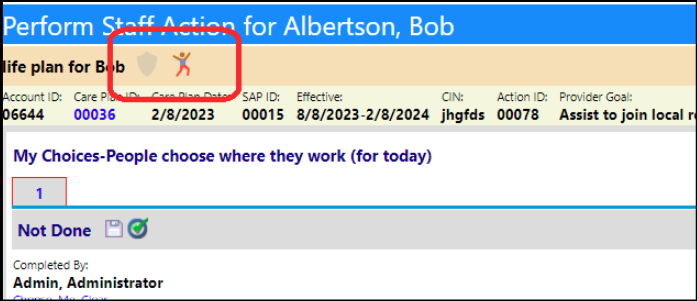
-
They can view the BSP, view Behaviors, and add new behaviors on the Staff Action Work Queue "Side Panel"
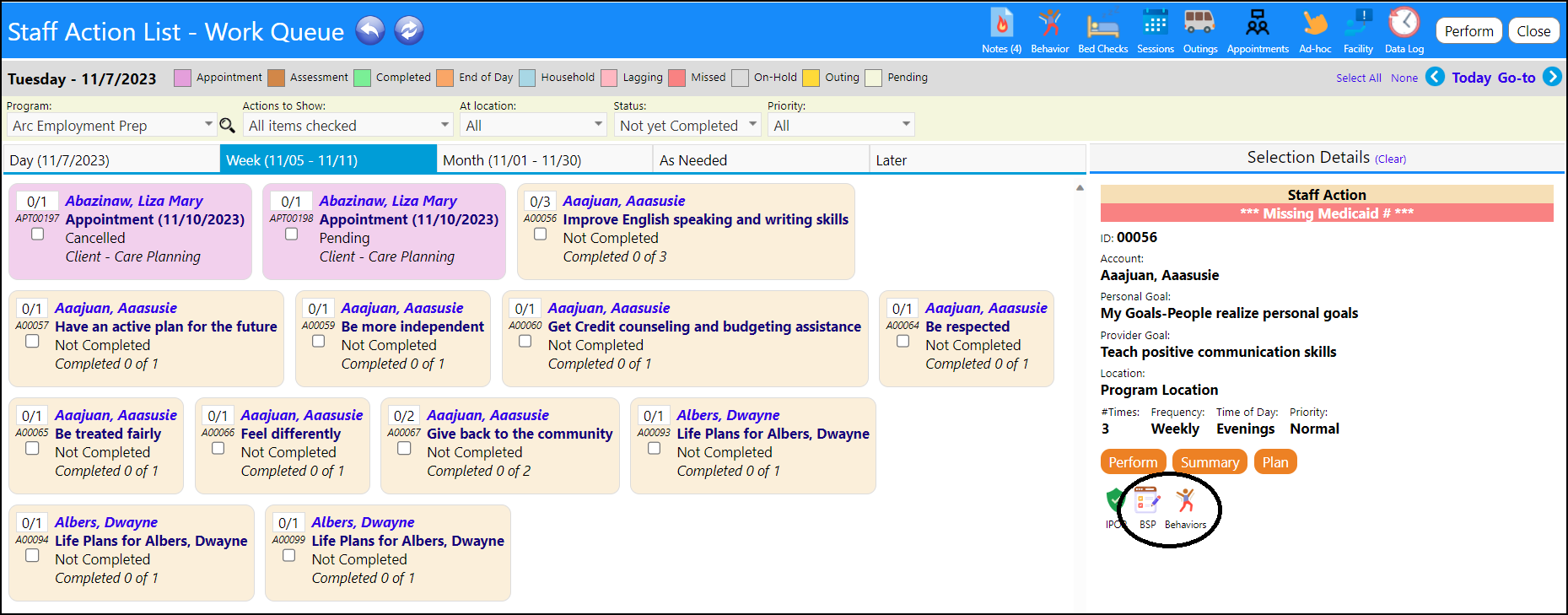
Viewing Behavior Support Plans
When clicking the link to view the 'BSP'...
- if only one 'BSP' exists, the plan will display in a PDF view.
- if multiple 'BSP's exist, a chooser will pop open so the user can select which plan to view. Upon selection, the plan will display in a PDF View.
- If there is no'BSP', a message will open up to inform the use a Behavior Support Plan has not been created.
The current behavior logging screen is extended to include a refence to the behavior types (from the BSP) and the descriptions.
Behavioral Events
Once the Behavior has been added, it will display on the Behaviors list:
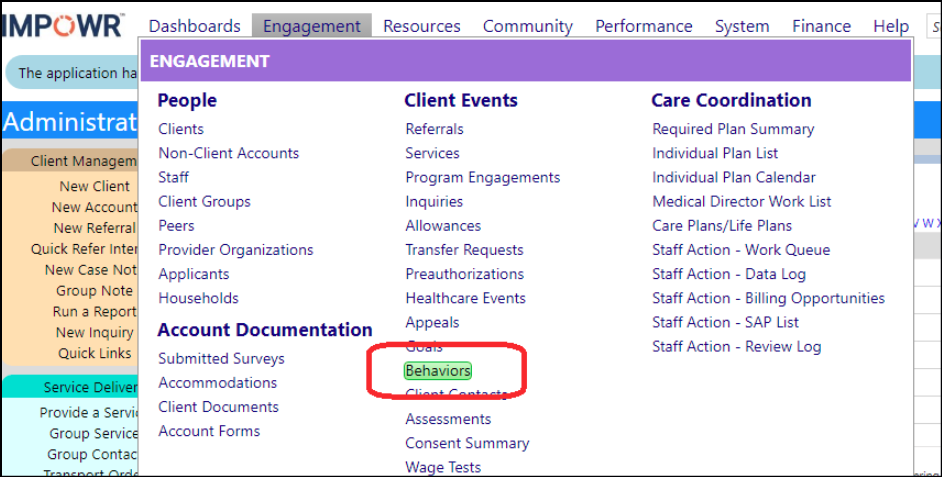
Adding a Behavioral Event
After opening up the Behaviors menu item, click on New Behavior
You can also link a reported behavior and an incident:

When adding a behavioral event (by clicking on "New Behavior") enter the following into the Behavior Details page:
Select the individual and then enter the following:
- duration
- intensity
- location
- comment
- observation
- triggering situation (if known)
- Mitigation (if used)
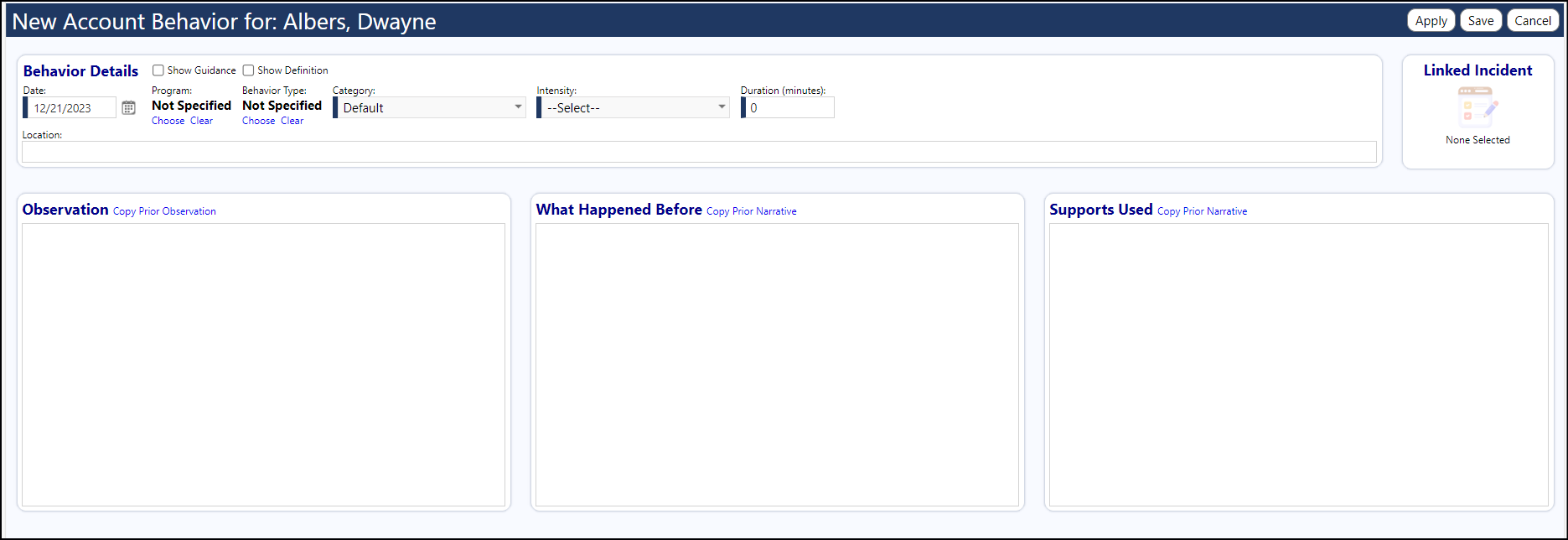
Track and Report the Behaviors
By clicking on the Log tab, users view the behaviors over a period of time and filter account, program, behavior, and date range. They can also build a behavior report that tracks and summarizes the logged behaviors by month, by clicking on the Monthly Rollup tab:

To see a report of the frequency, % of time tracked, and the duration of a behavior, based on its intensity and behavior type, click on the Account Behaviors Analysis tab:
